Bacteria Cooked Sauerkraut ~ with fennel ~ caraway ~ carrot ~ jalapeño ~
Pint of freshly packed sourkrout with jalepaño
Traditional sauerkraut is fermented with the bacteria contained in cabbage ~
Cabbage has been carefully cultivated for over 5000 years to have the perfect strains of bacteria to ferment with, creating a bacteria-rich, preserved, nutrient-rich, vitamin C rich side dish. Fermented side have been used over ages to add enzymes and bacteria to your meal. They most likely helped fight off any bad bacteria that may show up in other foods, helped keep your gut biology healthy and happy with healthy bacteria and tasted good.
I make a new batch every year, sometimes twice a year, but definitely at the end of the summer when they cabbages are seasonal, sweet and juicy.
Ingredients ~ per quart
Medium cabbage
2 Tbsp Fine Celtic Sea Salt (please don’t use table salt)
Quart Mason jar with traditional two-part pressure lids. (If you want to make this in a ceramic crock, the recipe the same but you will need a weighted plate ~ see instructions below
Possibly a little bit of spring water if your cabbage isn’t too juicy.
Optional Ingredients that I love to use;
Carrots
1 Tbsp Caraway seeds
1 Tbsp Fennel seeds
Jalapeños
red cabbage as an alternative

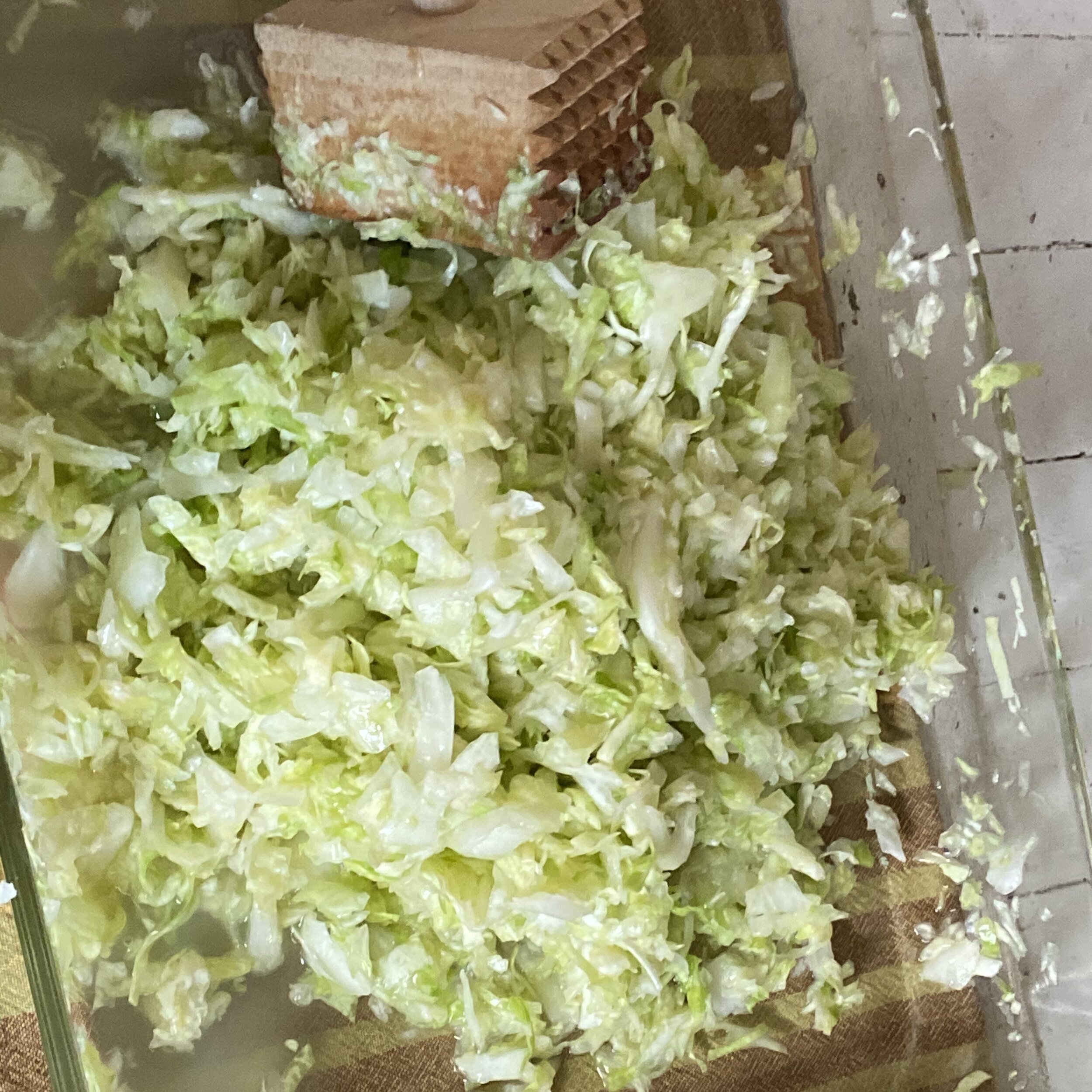
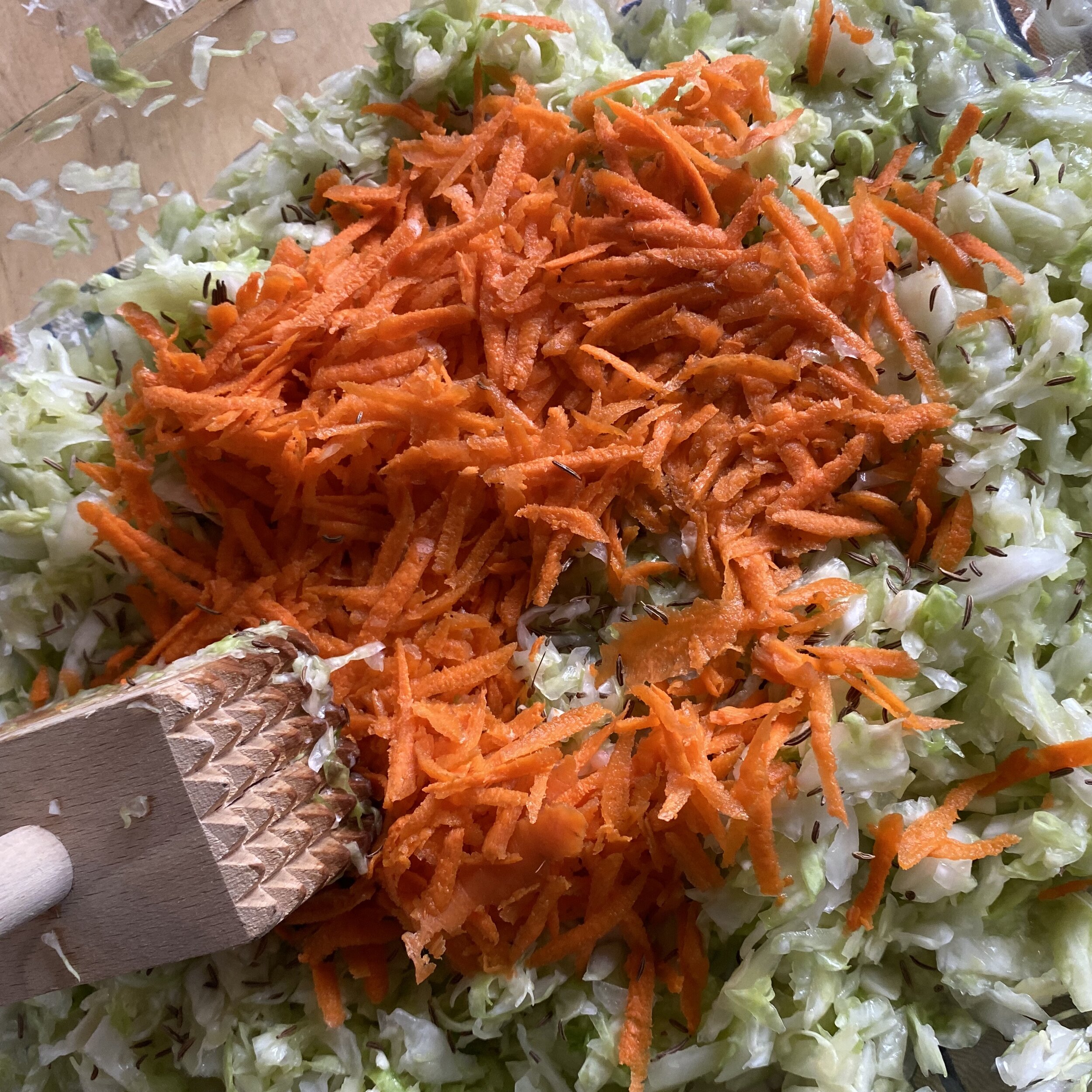
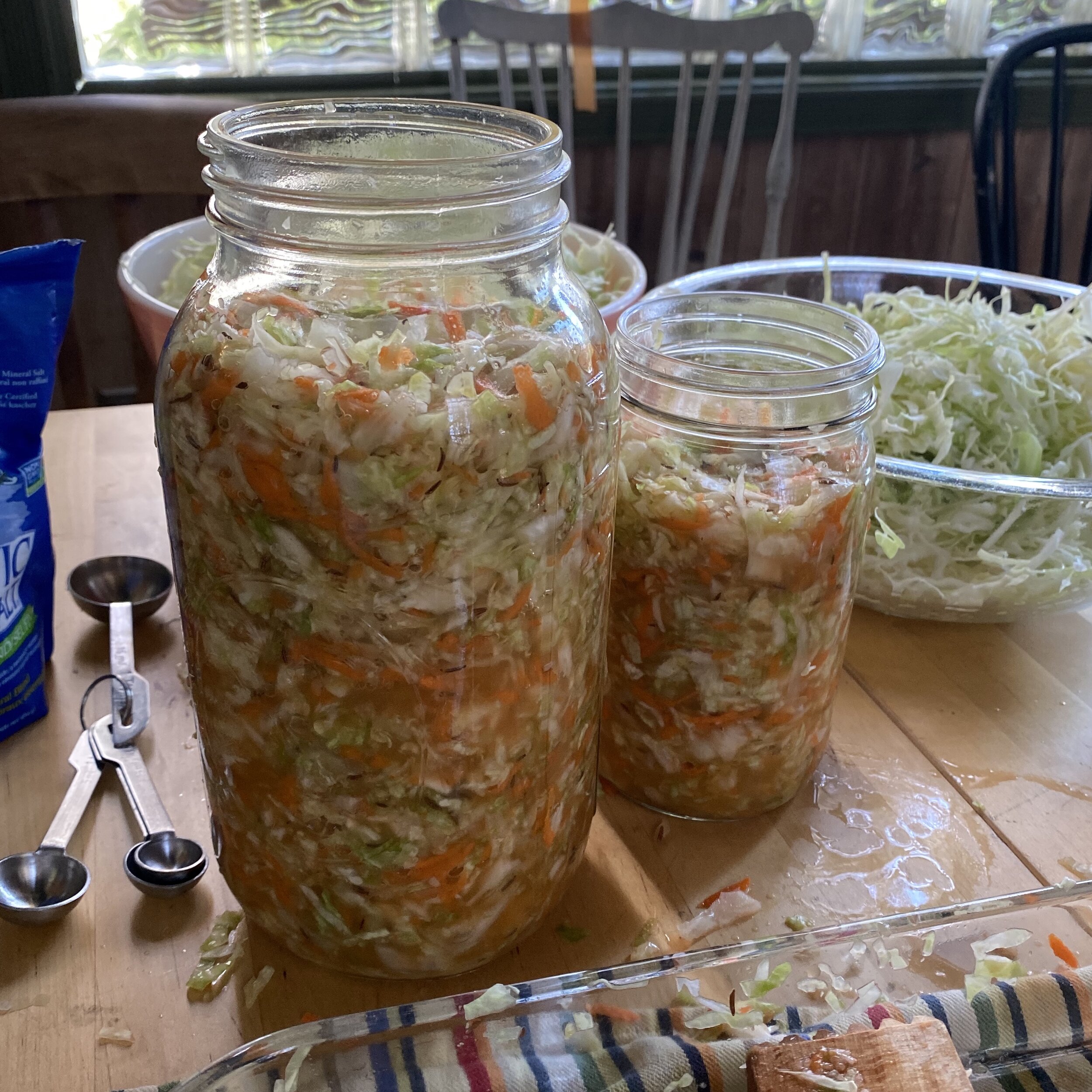
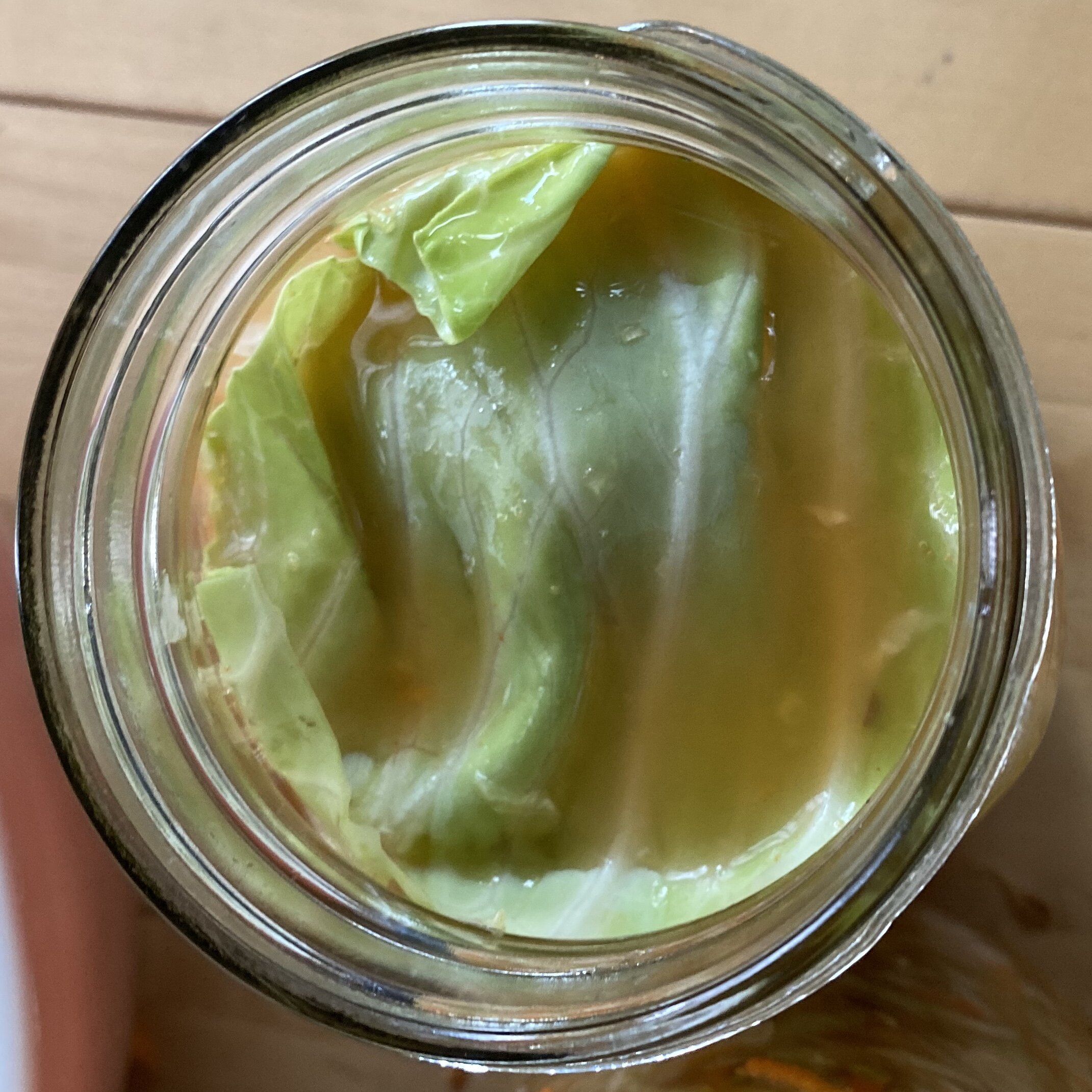
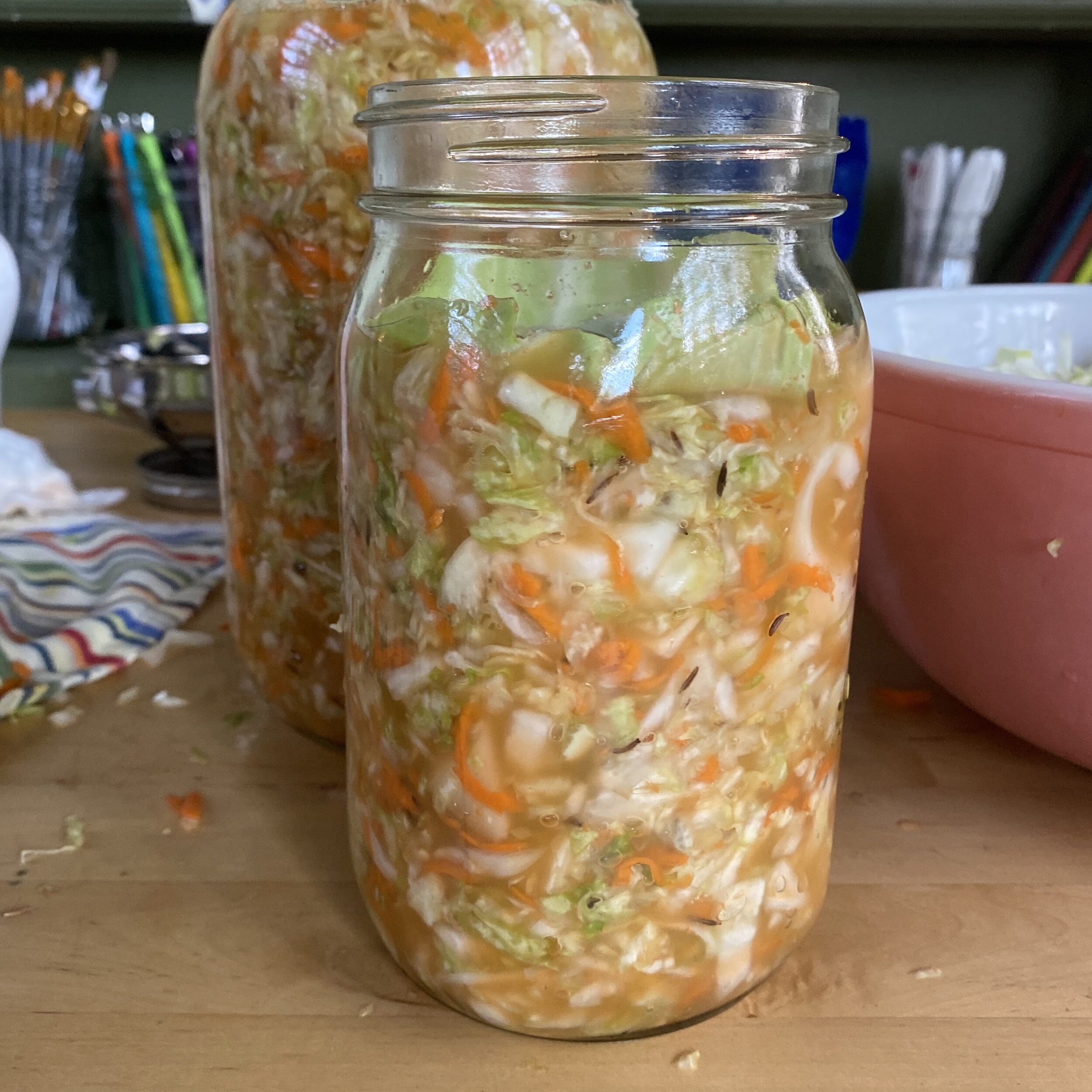
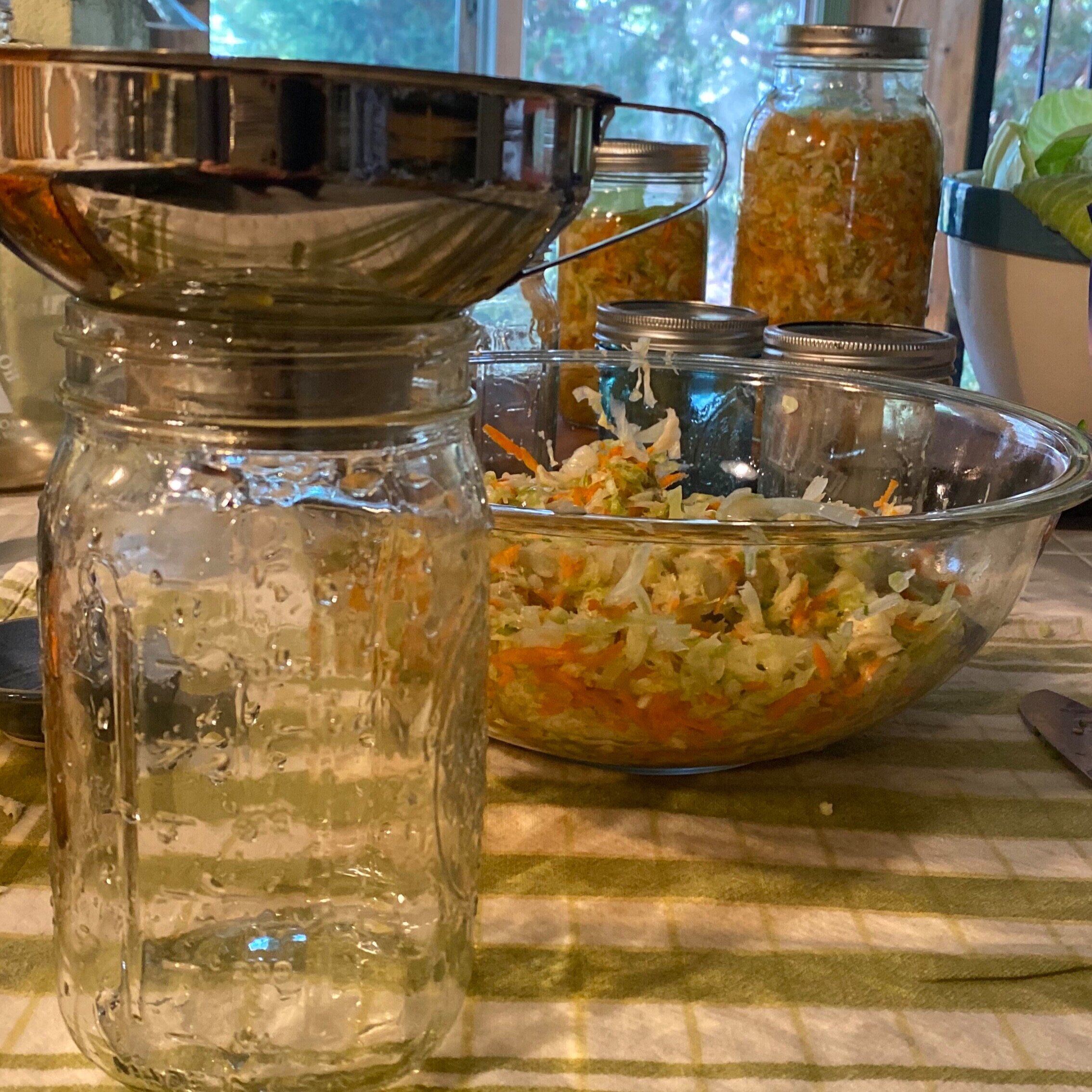
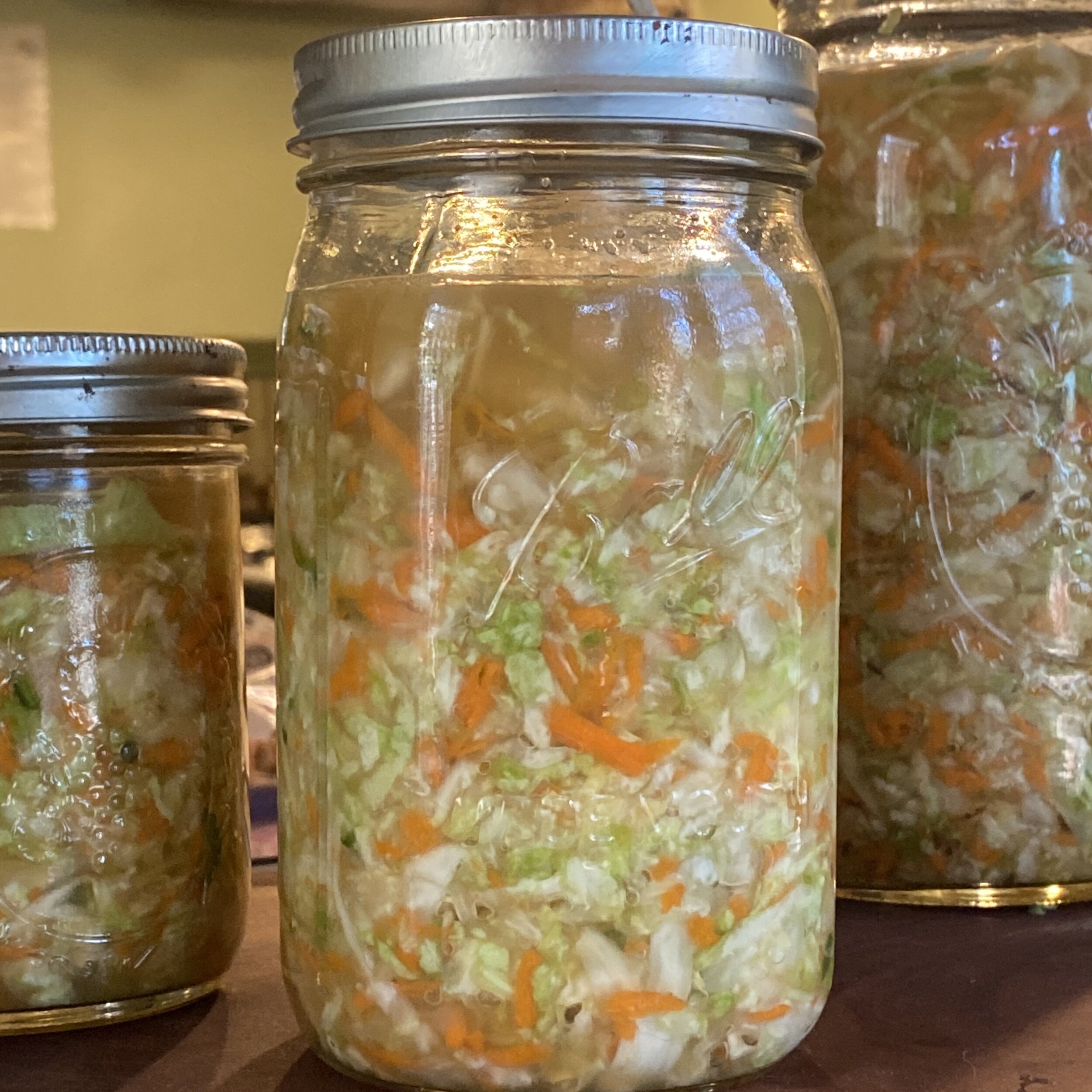
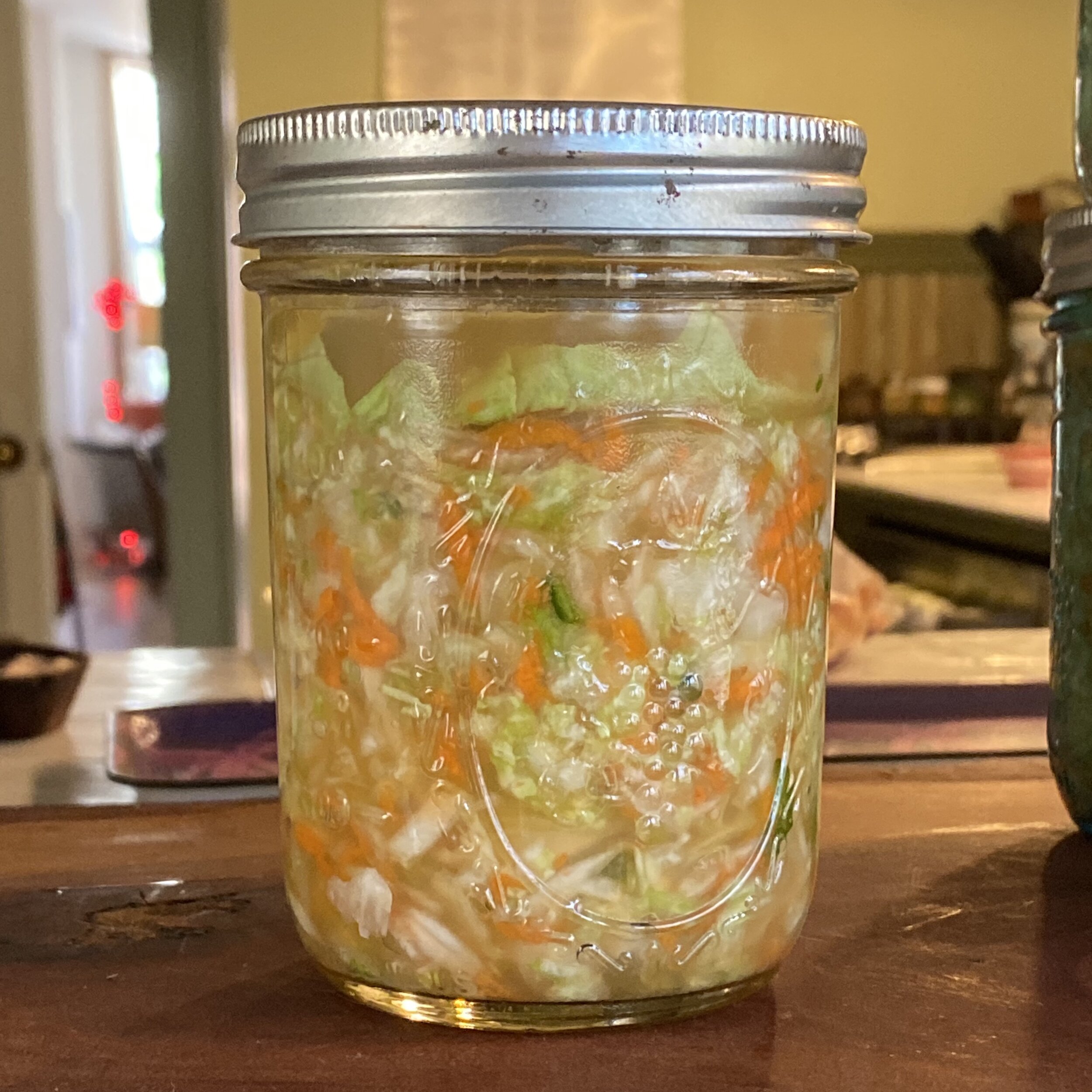
Steps ~ I have 10 steps here, but it’s not that complicated
Peal away the butter layer of the cabbage and set aside. Shred the cabbage (except the heart) in relatively same size pieces - any way you want - knife, shredder or food processor. I don’t like a food processor because it usually makes too small of pieces.
Add the salt to the shredded cabbag
Pound at least 10 mins to release the juices. (I use wooden meat mallet and a large lasagna dish (glass, no metal) Salt is what stops any putrefaction from happening while the beneficial bacteria contained within the cabbage takes hold and breaks down the cabbage.
Add your other flavors or not. You will see in this photo that I have used carrots in each one. But for flavors, I did one Caraway (traditional Eastern European), one Fennel (sweeter, and one I just like), and jalapeños which are just fun for those who like a spicier krout.
Pack the ingredients into the jar to 1” below the measuring mark. Juices should rise up and cover the krout.
Add a piece of cabbage to cover the krout and keep it submerged. If you have to add any additional liquid it is because you didn’t pound your cabbage enough to release the juices or your cabbage is just not juice. You can add water to cover the cabbage ~ please use spring water. The chlorine and other chemicals will slow down the process of fermentation.
Place the jars in a cool dark area (preferably between 68º and 72º), a basement usually works. Set them on a tray in case they ferment too fast and leak. If you used a ceramic crock, you need to leave about 2” or more from the top and use a plate with something to weigh it down to keep the fermenting cabbage submerged below the water line.
Check the jars every few days to see if they need to be burped. If the tops are rounded and there is a lot of pressure, release a little air over your sink.
Fermentation takes about 3 weeks at 68º to 72º. If it too warm, they will ferment faster, and vice versa. Faster fermenting cabbage will definitely build up more pressure and that pressure will need to be released by opening the lids slightly. The lids should have pressure under them when done.
Refrigerate when done. These will last 8-12 months in the fridge if unopened. Serve with all your meals as a side, on sandwiches, etc. It is really helpful to have fermented saurkrout as a side with meats to help you digest them easily.
In this batch I used 2 QTs jars, 1 QTs jars, and pints. Pints make good gift sizes.


